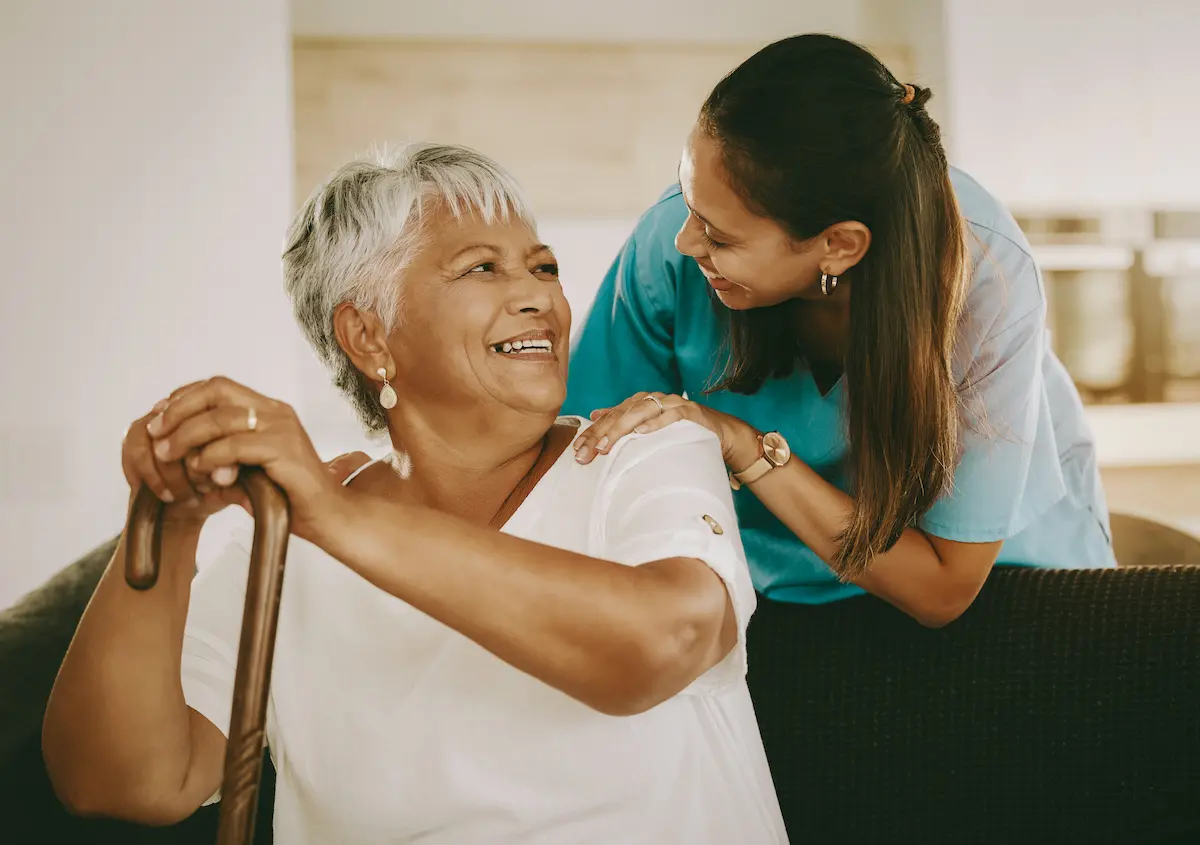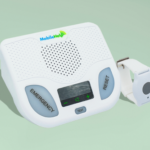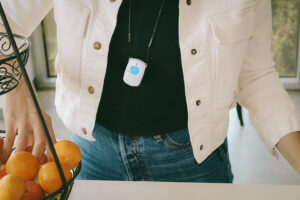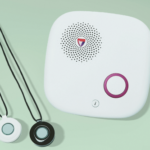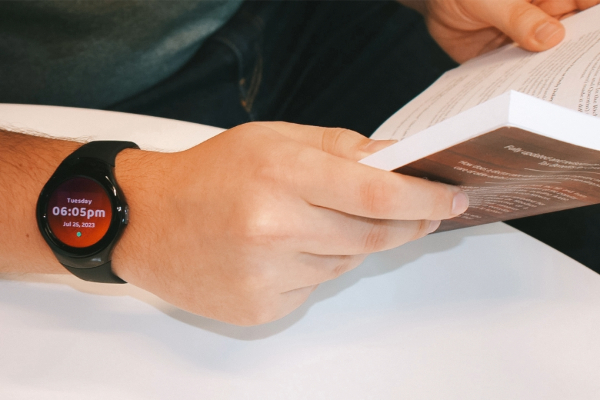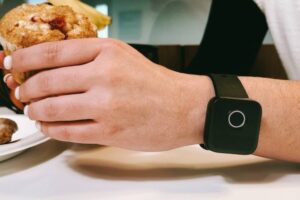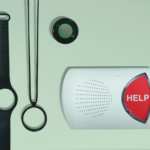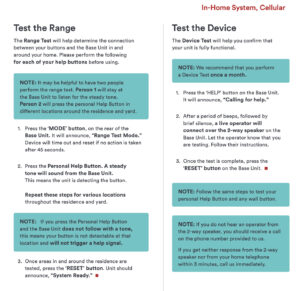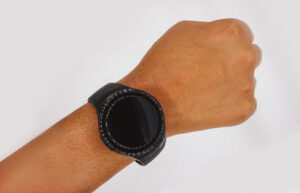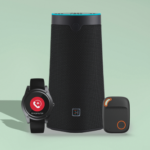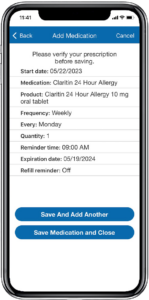Table of Contents
- The Handbook team researched and mystery shopped the most popular at-home and on-the-go medical alert systems to find the best combination of features and affordability.
- The base cost of a medical alert system is usually $25–$35 per month. MobileHelp offers the lowest starting monthly cost at $19.95. Common additional costs include activation fees, equipment fees, and fall detection.
- We tested 23 devices across nine brands, consulted 10 health care experts, and researched customer reviews for over 6,000 hours to curate our list of the top medical alert systems.
Which medical alert system is right for you?
- MobileHelp: Best value
- Medical Guardian: Best mobile system
- Bay Alarm Medical: Best at-home fall detection
- HandsFree Health: Best for health monitoring
- MedicalAlert: Best user-friendly device
The hours and energy that go into caring for someone else make it equivalent to working a job. In fact, one in three unpaid caregivers spend 20 or more hours per week caring for someone. This can negatively impact your mental and physical health, making it more difficult to show up as a caregiver and in other areas of your life.
“Don’t wait until you’re burnt out to ask for help,” says Iris Waichler, LCSW, a medical social worker and patient advocate for 40 years. “Common mental health challenges for caregivers include increased depression, anxiety, guilt, anger, sadness, and grief.”
While a medical alert system isn’t a substitute for caregiving, it can support your responsibilities and make it easier to coordinate care. A strong network can help lessen caregiver stress and burnout.
Medical alert systems offer your care recipient quick access to emergency services with the push of a button, and the best medical alert systems also have features that support you as a caregiver, such as location tracking, communication tools, programmed reminders, and more.
Searching for the right features for you and your care recipient can feel overwhelming, and we understand how difficult it can be to decide. That’s why the Handbook team hand-tested 23 of the most popular medical alert systems on the market. Only the top-performing five made the cut.
Why HelpGuide cares about older adult safety




The mental health of older adults is closely connected to feelings of independence, security, and connection. Older adults experiencing loneliness and social isolation tend to have a much higher risk of depression, anxiety, and suicide, as well as dementia, heart disease, and stroke, according to research.
Luckily, studies have shown older adults who use medical alert systems are more active and independent around the home, have a greater sense of security, and have overall improved mental health.
Independence is closely tied to one’s sense of identity, especially in older adults. Being able to perform daily tasks, make decisions, and live without constant assistance reinforces the feeling of being competent and valuable. A loss of independence can, unfortunately, erode this sense of self-worth.
Ryan Sultan, MD
Maintaining autonomy is directly related to mental health and quality of life. That’s why we’ve made it our mission to share the best information about medical alert systems that can help keep care recipients healthy, safe, and active.
Because our Handbook Team tests every medical alert brand we review, we can feel confident in the recommendations we make for our readers. We also consult with gerontologists (experts in older adult care), researchers, and industry leaders in older adult safety, as well as mental health experts, to vet our choices.
Importantly, we put ourselves in the consumer’s shoes by mystery shopping brands and walking through the set-up process—just like new customers—and we survey users and interview real people who use medical alert systems.
To formulate the strongly informed perspective we’re sharing with you here, we’ve compiled our testing data, interview and survey results, and insights from older adults and care providers.
Learn more about our medical alert systems review methodology.
What you need to know about our medical alert system testing
Our testing experience
When shopping for a medical alert system, you can only learn so much information by searching a brand’s website or speaking with a sales representative. You can get a general idea of features, but you won’t know what it’s like to use it. Is it simple to set up the base unit? Is the help button necklace comfortable to wear? How easy are the buttons to press?
That’s why we did the testing for you. We want to provide the most helpful information about our favorite medical alert systems based on our experiences.
The Handbook Team tested 23 medical alert systems across nine brands:
- Bay Alarm Medical
- GetSafe
- HandsFree Health
- LifeFone
- Lively
- Medical Care Alert
- Medical Guardian
- MobileHelp
- UnaliWear
We considered well-known brands with a generally positive reputation when choosing medical alert systems to test. Our team picked brands with various pricing options, device designs, and safety features.
Our testing process looked like this:
The Handbook Team went through a checklist of 30 questions while setting up and testing each medical alert system. As part of this, we followed each device’s user guide and noted what was intuitive or difficult about the setup process.
From our tester
“The MobileHelp Classic has super simple directions with large pictures and fonts. The Quick-Start Guide is larger than others and is super simple to follow.”
We spent the majority of our testing calling the monitoring center since this is the most important feature of any medical alert system. If the device had fall detection, we attempted six additional calls with fall detection tests.
From our tester
“For all fall tests, we waited 60 seconds with the device still on the ground before claiming whether the test was successful. Many fall detection devices don’t register a fall if it’s followed by sudden movement.”
While it’s difficult to duplicate true falls in a test environment, and more real-world fall data is necessary for a standard accuracy rate of fall detection devices, we wanted to test fall detection accuracy with a uniform testing method.
Our team conducted three “slow” and three “fast” test falls while wearing the fall detection device. We started all slow falls by sitting in a chair at 90 degrees and dropping to our knees before falling face down on a mat.
For the fast fall, we dropped the device from shoulder height to the mat to replicate a fast, hard-impact fall.
“Generally speaking, a hard fall is a fall that can be difficult to stop, happens quickly, and results in a strong impact to the body,” says Sean Marchese, a registered nurse with more than 20 years of experience. “A slow fall is a fall that occurs more gradually, and the impact is likely weaker. However, individuals are not immune to injury after a slow fall.”
If you or your care recipient have a higher risk of falling, Marchese recommends being proactive and speaking with your doctor about assistive devices and prevention strategies.
Compare the best medical alert systems
| Brand | Starting monthly price | In-home range (feet) | Mobile device battery life | Connection type | Visit Site |
|---|---|---|---|---|---|
| $19.95 | 600–1,400 | Up to 3 days | AT&T cellular, GPS landline | Visit Site | |
| $24.95 | 1,000 | Up to 5 days | AT&T or Verizon cellular, GPS, landline | Visit Site | |
| $29.95 | 1,300–1,400 | Up to 5 days | AT&T or Verizon cellular, GPS, landline | Visit Site | |
| $19.95 | 20 | Up to 40 hours | T-Mobile cellular, GPS | Visit Site | |
| $27.95 | 800 | Up to 5 days | Landline, AT&T cellular | Visit Site |
The best medical alert systems reviews in 2024
1. MobileHelp: Best value
2. Medical Guardian: Best mobile system
3. Bay Alarm Medical: Best at-home fall detection
4. HandsFree Health: Best for health monitoring
5. MedicalAlert: Best user-friendly device
Other medical alert system brands we considered
In addition to the brands we selected as our top picks, we also evaluated medical alert systems from GetSafe, LifeFone, Lively, Medical Care Alert, and UnaliWear.
After rigorous hands-on testing, we determined that MobileHelp, Medical Guardian, Bay Alarm Medical, and HandsFree Health performed exceptionally well in terms of response time and fall detection. These four brands stood out for us, as their performance and services consistently functioned better than other brands we tested. As a result, we don’t recommend GetSafe, LifeFone, Lively, Medical Care Alert, and UnaliWear, at this time.
What is a medical alert system?
A medical alert system is a device that connects to a 24/7 monitoring center. In the event of an emergency, such as a fall or injury, staff at these facilities can dispatch emergency services or care providers. They’re available as at-home or mobile devices a user can take on the go, ensuring their safety while out running errands or engaging in favorite activities. Medical alert systems allow older adults or those with health conditions to continue to maintain their independence while feeling secure in the knowledge that help is available at the push of a button.
Handbook Team Tip #1
Create a caregiving plan before you need it—don’t wait until an illness or injury makes it necessary.
Pros and cons of medical alert systems
What we like about medical alert systems
- Most devices come out of the box ready to use (“plug and play”).
- Monitoring center staff have access to user medical history, emergency contacts, and other info.
- Fall detection devices automatically contact the monitoring center even if the wearer can’t.
- Many include a free caregiver app with location tracking, battery monitoring, reminders, and other helpful monitoring tools.
“My friend, who is in her seventies, has shared how safe she feels and how grateful she is to have the device in case of an emergency,” says Christina Peoples, a gerontologist based in Greensboro, North Carolina. “She has been contacted by the medical alert company in the past due to a fall and was thankful for the support, even though it wasn’t a major fall. My friend really does believe in the importance of being safe whether in the home or out and about in the community.”
What we don’t like about medical alert systems
- Can’t speak with a monitoring center agent through basic help button necklaces or bracelets.
- Base station range may vary depending on location and placement.
- Some wearable devices are bulky and uncomfortable.
- Must remember to charge the device.
How much do medical alert systems cost?
Handbook Team Tip #2
Be on the lookout for extra fees. Some medical alerts (usually smartwatches and other smart devices) come with hefty one-time equipment fees in addition to the recurring monthly charges.
| Monthly Cost | $19.95 | $29.95 | $24.95 | $19.95 | $27.95 |
| Fall detection cost | $11/mo | $10/mo | $10/mo | $10/mo | $10/month |
| Origination Fee | N/A | N/A | N/A | $99.95 for the speaker | $99.99 programming fee |
| Estimate Info | N/A | N/A | $30 w/fall detection | N/A | N/A |
The base cost of a medical alert system is the monthly monitoring fee. This fee is usually $25–$35 per month and varies by brand and device.
The lowest and highest starting monthly costs for the best medical alert systems:
- MobileHelp: $19.95 (lowest)
- Medical Guardian: $29.95 (highest)
Unfortunately, the final cost of your medical alert system is not just the monthly monitoring fee—it’s a little more complicated than that.
Final medical alert system costs may include the following fees:
- Activation fee: Some brands charge an extra fee (usually $30 or more) to activate the medical alert system. This fee is usually not advertised as part of the overall price, so look out for it during checkout.
- Equipment fee: Most at-home systems are rented, meaning you don’t pay for the equipment, and you’ll return it when you cancel your subscription. Mobile medical alert systems and smartwatches are usually purchased, which is where the equipment fee comes in. Equipment fees for brands featured here are $99–$199.95.
- Fall detection: Fall detection can be added to most at-home, mobile systems, and even smartwatches for $10–$11 per month.
- Add-on accessories: Wall buttons, a lockbox, and extra help button necklaces are common safety equipment you can add to your package.
- Protection plan: Protection plans ensure your equipment is repaired or replaced if damaged, stolen, or lost. Most plans cost less than $10 per month.
- Shipping: Shipping fees are about $12–$15. Most brands offer free shipping when you choose a quarterly or annual payment plan.
Insurance coverage
Unfortunately, Original Medicare does not cover medical alert systems since they aren’t considered durable medical equipment. Some Medicare Advantage plans offer medical alert system coverage, but it depends on your insurance plan and location.
Most private insurance plans don’t cover medical alert systems but always check with your insurance provider to see if coverage is available.
How to save money
- Flexible spending accounts (FSA): These pre-tax funds are eligible to pay for medical alert systems. Remember, your FSA is connected to your employer, so you can’t use it when you retire.
- Health savings accounts (HSA): You can use your HSA to pay for a medical alert system even if you’re retired, but you can’t add to your HSA once enrolled in Medicare.
- Payment plan discounts: Many medical alert brands offer discounts when you pay quarterly (four times a year) or annually (once a year) instead of month-to-month. Common perks are free shipping, a free month of service, or a discounted monthly monitoring fee.
- Seasonal discounts: Look for limited-time discounts throughout the year, especially around holidays or events, like Fall Prevention Awareness Month in September.
Key features to look for in medical alert systems
Handbook Team Tip #3
If you can’t decide between an in-home or on-the-go system, consider a bundle. Some companies, like MobileHelp, bundle both types of devices together in a more affordable package.
When evaluating medical alert systems, there are some standard features you should expect from any reliable provider. These core features ensure that users can connect with monitoring center staff quickly in the event of an emergency, fall, or medical crisis. In response to an emergency call, the monitoring center should be able to pinpoint the user’s location, communicate clearly with the user to assess the situation, and dispatch help appropriately.
In-home vs. on-the-go
An at-home medical alert system consists of a base station with a two-way speaker and a help button necklace or bracelet. The user can contact the monitoring center from their backyard or even a few blocks from their home, depending on how far the connection range is between the base station and the necklace.
Keep in mind the at-home necklace and bracelet don’t have speakers. If you press it during an emergency and you’re not near the base station, then you won’t be able to speak with the monitoring center agent. The agent will still dispatch emergency services to your home and call your emergency contacts even if they can’t speak with you.
On-the-go medical alert systems are either compact mobile devices (about the size of a pager) or smartwatches. These devices call the monitoring center anywhere with cell service and have a built-in speaker to communicate with the monitoring center staff.
If your care recipient only needs protection while in their home…
Consider an at-home system. A mobile system may be the right choice if they enjoy independent activities outside their home or have a history of wandering.
Fast response time
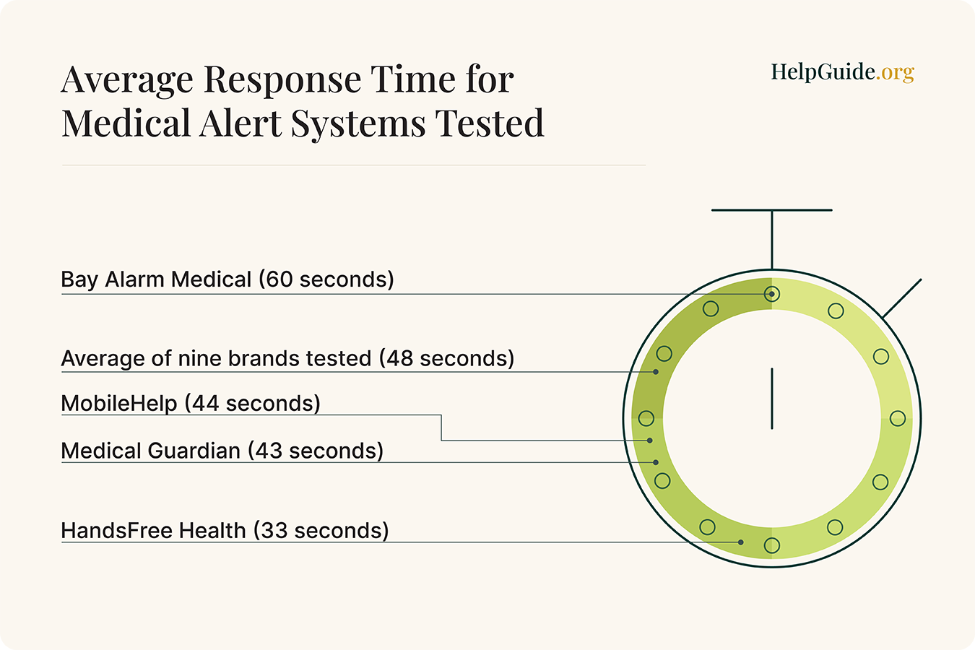
Response time is how long it takes to speak with a monitoring center agent after calling for help or triggering fall detection.
The average response time for the best medical alert systems was one minute or less:
- Medical Guardian: 48 seconds.
- MobileHelp: 44 seconds.
- Bay Alarm Medical: 60 seconds.
- HandsFree Health: 33 seconds.
- Medical Alert: 44 seconds
The average response time across all nine brands we tested was 49 seconds.
Fall detection
Fall detection is an important safety feature if you or your care recipient have a higher risk of falling or unconsciousness because of a health condition, limited mobility, medications, or other factors. Automatic fall detection devices have a sensor that instantly contacts the monitoring center when it detects a fall.
Many older adults or those with chronic medical conditions fear the possibility of falling or having a medical emergency when alone […] Knowing that help is just a button press away can offer significant reassurance, decreasing anxiety and stress.
Nilou Esmaeilpour, clinical director of Vancouver, British Columbia-based Lotus Therapy.
Although fall detection doesn’t prevent falls, getting help less than an hour after a fall helps minimize the increased risk of future falls, reduced mobility, and pressure-related injuries.
Research shows that fall detection devices worn around your wrist have a higher volume of false alarms from frequent hand and arm movements. Fall detection necklaces worn on the chest are usually more accurate, but many brands now offer medical alert watches with fall detection.
The MGMini Lite from Medical Guardian is the brand’s first medical alert bracelet to have fall detection. We were impressed that the MGMini Lite detected five out of six falls—more than the MGMini necklace—despite the research mentioned above.
We spoke with a customer service representative who said that while the MGMini Lite is a bracelet, the equipment is similar to Medical Guardian necklaces and has the same fall detection sensors and algorithm.
Learn more about the best medical alert systems with fall detection to help you decide which system is right for you.
Location tracking
Most mobile systems and smartwatches connect to GPS, allowing you to check on your care recipient’s location any time they’re wearing their medical alert system.
The GPS tracking device has given me peace of mind when I know my mom is unsupervised outside of the hours the caregivers are with her […] I am able to keep an eye on her location to see whether or not she has left her apartment and wandered away on the grounds of the property.
Mea, caregiver
“The GPS tracking device has given me peace of mind when I know my mom is unsupervised outside of the hours the caregivers are with her,” says Mea, who lives in Vermont and serves as her mother’s caregiver. “I am able to keep an eye on her location to see whether or not she has left her apartment and wandered away on the grounds of the property.”
Caregiver apps make location tracking even easier, and our favorite apps display the device’s location directly in Google Maps.
Battery life
How long does your medical alert system last before it needs a charge? If an on-the-go system is best for your care recipient, the battery should last at least a full day.
Luckily, most mobile systems have batteries that last for multiple days, with Medical Guardian and Bay Alarm Medical offering the most extended mobile battery life here: up to five days. Keep in mind that medical alert watch batteries drain quicker since they have more features. Overall, battery life also varies depending on cell signal strength and how much you use the device.
If you’re considering an at-home system, battery life isn’t as big of a concern since the base station stays plugged in. If there’s a power outage, most base stations include a backup battery.
Help button necklaces and bracelets have the most notable battery life: They usually last one to three years. Some brands even track the battery and automatically replace the help button when it’s running low.
Caregiver support
As a caregiver, what kind of information can you access? Most brands notify designated caregivers when the user calls the monitoring center. Medical Guardian is the only brand that charges for this feature—every other one in this review includes these features for free (which we think should be true for all brands).
Some brands allow caregivers to communicate with each other and their care recipient through the corresponding mobile app. This is a useful feature for multiple caregivers, especially remote caregivers.
Lockbox feature
Some medical alert systems offer an optional lockbox that secures keys outside the home for caregivers or emergency responders to access. The lockbox sends alerts when it’s opened so you know if someone accessed your home. This can give peace of mind if you or your care recipient live alone. Consider whether key access for caregivers or medical personnel is helpful for your situation.
Wellness check-Ins
Select medical alert providers offer wellness check-ins as a feature. An agent reaches out at set times to check in with you or calls to check when you press your help button to confirm whether it was pressed accidentally or intentionally. If you don’t answer after multiple tries, they will notify your emergency contacts and dispatch help. This proactive monitoring can assist if you become incapacitated and unable to call for support yourself.
Activity tracking
Newer medical alert models may track step counts, distance traveled, calories burned, and even sleeping patterns. Viewing these activity metrics requires a paired smartphone app. If monitoring exercise or activity levels motivates you or your loved one, seek out systems with robust fitness tracking. Syncing to Apple Health or Google Fit can provide further insights.
Medication reminders
Some medical alert systems integrate medication reminders and are capable of connecting to “smart” automatic pill dispensers. This helps prevent skipped doses or double-dosing mistakes. The monitoring center receives alerts if doses are missed, allowing them to provide friendly reminders. If forgetting medication is an issue of concern, medication assistance through a medical alert device may offer a solution.
How to choose the best medical alert system for you
The ideal medical alert system depends on your lifestyle and personal circumstances. In order to select the best medical alert device, consider your budget and the most important features you’ll need. Here are a few things to keep in mind when shopping:
- Type of system: Do you spend most of your time at home or on the go? If you’re more independent, perhaps an on-the-go or mobile system is the most suitable. If you spend the majority of your time in your home, a home system with a base station will suffice. You can also choose bundled packages that include both at-home and on-the-go systems.
- Range and connection: The range of your home system—how far you can go and still connect to the base unit—will be longer if your at-home system operates from a cellular connection versus a landline. Conversely, if you have inconsistent cellular service in your home, a landline connection might be preferable for reliability.
- Automatic fall detection: If you’re prone to falls, a device with fall detection is an additional safety net to consider.
- Water resistance: Some wearable and wall-mounted medical alert systems are water-resistant to withstand rain or splashing, but are not capable of being submerged in water, which means you cannot take them in the shower, bathtub, or pool. Consider investing in a waterproof device if bathing or swimming with your medical alert button is important to you—especially since the bathroom is a fall-prone environment.
- Battery life: While at-home systems have long battery lives, on-the-go devices vary. If you spend a lot of time out of the home, make sure to factor in the battery life of the device and how long it takes to recharge.
Once you have settled on the above details, you’ll have an easier time choosing the medical alert device that best suits your needs.
Our final verdict
We believe Medical Guardian, Bay Alarm Medical, MobileHelp, HandsFree Health, and Medical Alert are the best medical alert system brands on the market after mystery shopping and testing nine brands and more than 20 devices.
Medical Guardian was the most impressive all around. Its accurate fall detection, fast response times, feature-filled caregiver app, friendly monitoring staff, and device variety shot it to the top of our list.
If you’re looking for a simple, reliable medical alert system but need to watch your budget, we recommend MobileHelp.
Bay Alarm Medical was the most impressive at-home system. The brand’s fall detection necklace was the only in-home necklace to detect all six test falls, and the Bella Charms that accessorize (and disguise) the help button necklace are a fun bonus.
HandsFree Health is the most untraditional medical alert system on our list. The WellBe smart assistant is available with the speaker, necklace, and watch, and it answers health, general knowledge, and location questions on top of storing health information. We like this option for those wanting more engaging medical alert system features.
When shopping for the right medical alert system for your care recipient, include them in the process by asking them what device designs they like and what features are important to them. Once you choose a medical alert system together, use a brand’s trial period to see how they like wearing and using the device every day.
Frequently asked questions
No, Original Medicare (Part A and B) doesn’t cover medical alert devices. Medicare Advantage (Part C) may cover full or partial costs, but coverage varies by insurance plan and state. Always check coverage details with your insurance provider.
AARP does not recommend a specific medical alert system, but it offers discounts on Lifeline medical alert systems and invisaWear personal safety devices for AARP members.
Medical alert systems work by connecting the user to a 24/7 monitoring center using a landline or cellular network connection. When you press the help button, the device calls a monitoring center agent, who will contact emergency services, your primary emergency contact, or both. If the agent can’t hear you or you’re unresponsive, they’ll automatically dispatch emergency services to your location.
Yes, medical alert systems can help older adults with memory impairment. Many devices include task and medication reminders that can be helpful, but vague reminders, like “take medications,” may not be beneficial for some users. Some medical alert systems notify the caregiver if the user does not acknowledge the reminder, making it easier to follow up with their care recipient.
It may also be difficult for some users to remember to wear their medical alert system daily. Wall buttons and other non-wearable devices can be more helpful for older adults with memory impairment.
No, there are no free medical alert systems, but some programs can help with partial or complete coverage. Eligible veterans and their family members can receive a free MedEquip Alert medical alert system through their Veterans Affairs benefits. Use the Eldercare Locator to see what resources are available in your area to help pay for medical alert system costs.
Average response time, range (at-home systems) fall detection, GPS tracking, and battery life are the most important medical alert system features.
Yes, medical alert systems are worth it. Medical alert systems can give older adults a sense of independence and security, which can positively affect their mental health and well-being. Most medical alert systems offer fall detection, location tracking, emergency contact instructions, and other crucial safety features for users and caregivers.
Experts recommend creating a caregiving plan before you need one instead of waiting for an illness or injury that makes it necessary. Caregivers should approach the conversation with future care recipients from a place of collaboration, concern, and caring to explore ideas and set expectations. It can be helpful to discuss specifics about who might offer care, whether they’d want to stay at home in the event of a medical condition that affects their independence, and how comfortable they’d be with health care professionals coming in to help.
- Caregiving for Family and Friends — A Public Health Issue. (2019, August 7). Centers for Disease Control and Prevention. Link
- Schulz, R., & Sherwood, P. R. (2008). Physical and mental health effects of family caregiving. American Journal of Nursing, 108(9), 23–27. Link
- Stokke, R. (2016). The personal emergency response system as a technology innovation in primary health care services: an Integrative review. Journal of Medical Internet Research, 18(7), e187. Link
- Falls and fractures in older adults: causes and prevention. (n.d.). National Institute on Aging. Link
- Blackburn, J., Ousey, K., Stephenson, J., & Lui, S. (2022). Exploring the impact of experiencing a long lie fall on physical and clinical outcomes in older people requiring an ambulance: A systematic review. International Emergency Nursing, 62, 101148. Link
- González-Cañete, F. J., & Casilari, E. (2021). A feasibility study of the use of smartwatches in wearable fall detection systems. Sensors, 21(6), 2254. Link



